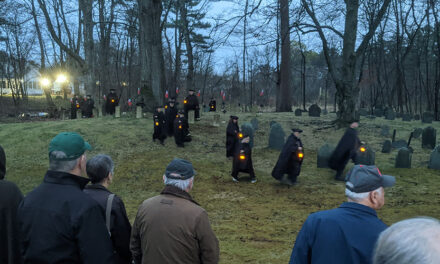Published December 4, 2019
By DAN TOMASELLO
LYNNFIELD — The Board of Selectmen unanimously approved a shift in the town’s tax classification on Monday.
The shift approved by the selectmen means the tax rate will be $13.92 per $1,000 of valuation for residential property for fiscal year 2020, representing a one cent increase from FY19’s tax rate of $13.91 per $1,000 of valuation. The commercial, industrial and personal property (CIP) tax rate will be $18.86 per $1,000, which is higher than FY19’s rate of $17.95.
“It’s about $200 and change (more) on the average house in town,” said Interim Assessing Manager Dick Simmons.
The Department of Revenue is required to approve the tax rates.
Simmons noted the Board of Assessors recommended using a 1.29 shift for the residential and commercial tax rate.
“Shifting the tax rate moves the tax burden to be raised by the town off residential properties and onto commercial, industrial and personal property,” said Simmons. “It establishes a minimum factor for residential properties and sets a higher factor for commercial properties.”
Simmons stated in a handout that the average single-family home value in town is $650,500 and the average tax bill for FY20 will be $9,055. He stated the average condo value for FY20 is $635,300 and the average tax bill for a condo will be $8,843.
According to Simmons, 86 percent of the town’s properties are residential, 12 percent of properties are commercial, 0.64 percent are industrial and personal properties total 1.22 percent.
The interim assessing manager presented FY19 residential and CIP tax rate data from several neighboring communities. North Reading had the highest tax residential rate with $15.58 per $1,000 of valuation. Woburn had the lowest residential tax rate of $9.50, but the city also had the highest CIP tax rate of $23.72.
“Lynnfield is in between,” said Simmons.
Simmons said the state allows municipalities to adopt residential and small business exemptions as well as open space discounts for property taxes. He noted that the town has traditionally not provided the three exemptions to taxpayers.
Selectmen Chairman Phil Crawford said he supported using the 1.29 shift.
“I don’t think we should be shifting more of the burden to the homeowners,” said Crawford. “There is already going to be an increase on their side. I believe maxing out the 1.29 and going towards $13.92 for homeowners is roughly a $200 per household increase.”
In response to a question from Selectman Dick Dalton, Simmons said the average condominium value “stayed basically the same” as FY19.
“I was brought in to do the values for the town a few weeks ago after Ray Boly left,” said Simmons. “I didn’t see any reason in the ratios that were exhibited by the sales from 2018, which is the year we chose from. I actually expanded the sales from the later part of 2017 to the beginning of 2019. I didn’t see any real reason for raising the values on condos to bring them into line. They were within the tolerances allowed by the DOR, so I figured to let them be.”
Board of Assessors member Richard O’Neil Jr. said the 1.29 shift is “fair to residents and the commercial and industrial base.”
After the selectmen approved the tax rate shift, O’Neil thanked Simmons for “coming out of retirement to help us out.” He also thanked Board of Assessors Chairman Donald Garrity “for really stepping up and getting this work done.”
“It’s a complicated process, and Dick and Don both did a great job,” said O’Neill.




